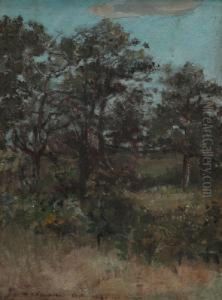William Rudolph O'Donovan Paintings
William Rudolph O'Donovan was an American sculptor known for his work in the Realist movement during the late 19th and early 20th centuries. Born on March 28, 1844, in Preston County, Virginia (now West Virginia), O'Donovan's early life was marked by the American Civil War, in which he served as a Confederate soldier. This experience, coupled with his Irish-American heritage, influenced much of his later work, which often explored themes of struggle, identity, and the human condition.
After the war, O'Donovan moved to New York City, where he embarked on his artistic career, largely self-taught but later studying with some of the prominent artists of his time. His work gained recognition for its meticulous attention to detail and its realistic portrayal of human figures, a hallmark of the Realist movement. O'Donovan became best known for his portrait busts and monumental sculptures, many of which commemorated figures from American history, including Abraham Lincoln, Walt Whitman, and General William Tecumseh Sherman.
O'Donovan's contributions to American art were not limited to his sculptural works. He was also a vocal advocate for the arts, contributing to the intellectual and artistic discourse of his time through essays and public speeches. He was a member of various artistic societies, including the National Sculpture Society, and his influence extended to his mentorship of younger artists.
Despite his success, O'Donovan's work and contributions have not always been widely recognized in the canon of American art history. Nonetheless, his sculptures can still be found in public spaces, cemeteries, and museums across the United States, serving as enduring testaments to his skill and vision.
William Rudolph O'Donovan passed away on April 20, 1920, in New Brighton, Staten Island, New York. His legacy, though understated, remains an important part of the narrative of American art, particularly within the context of the Realist movement and the post-Civil War era in which he lived and worked.
